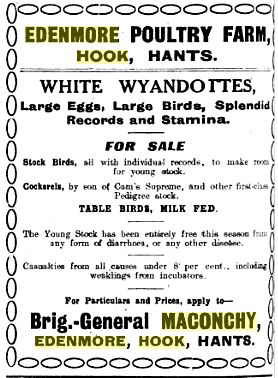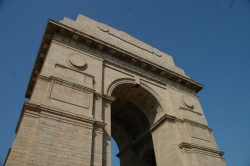
Advertisement for Edenmore Poultry Farm

|
|
Advertisement for Edenmore Poultry Farm
|

|
|
Delhi Memorial (India Gate) where George's
name is inscribed
|
 |
|
Crest of John Arthur Maconchy
drawing from myfamilysilver.com
|